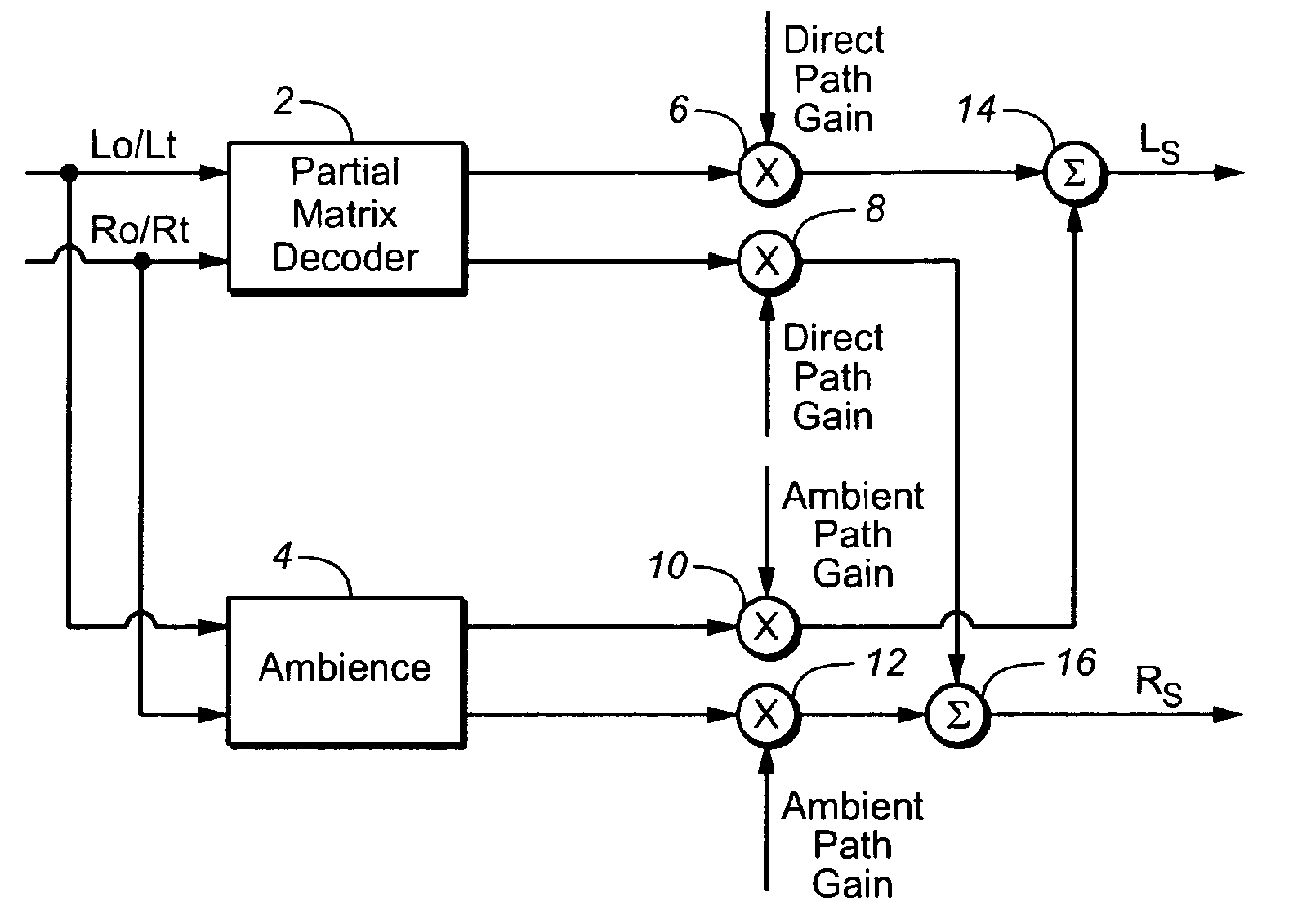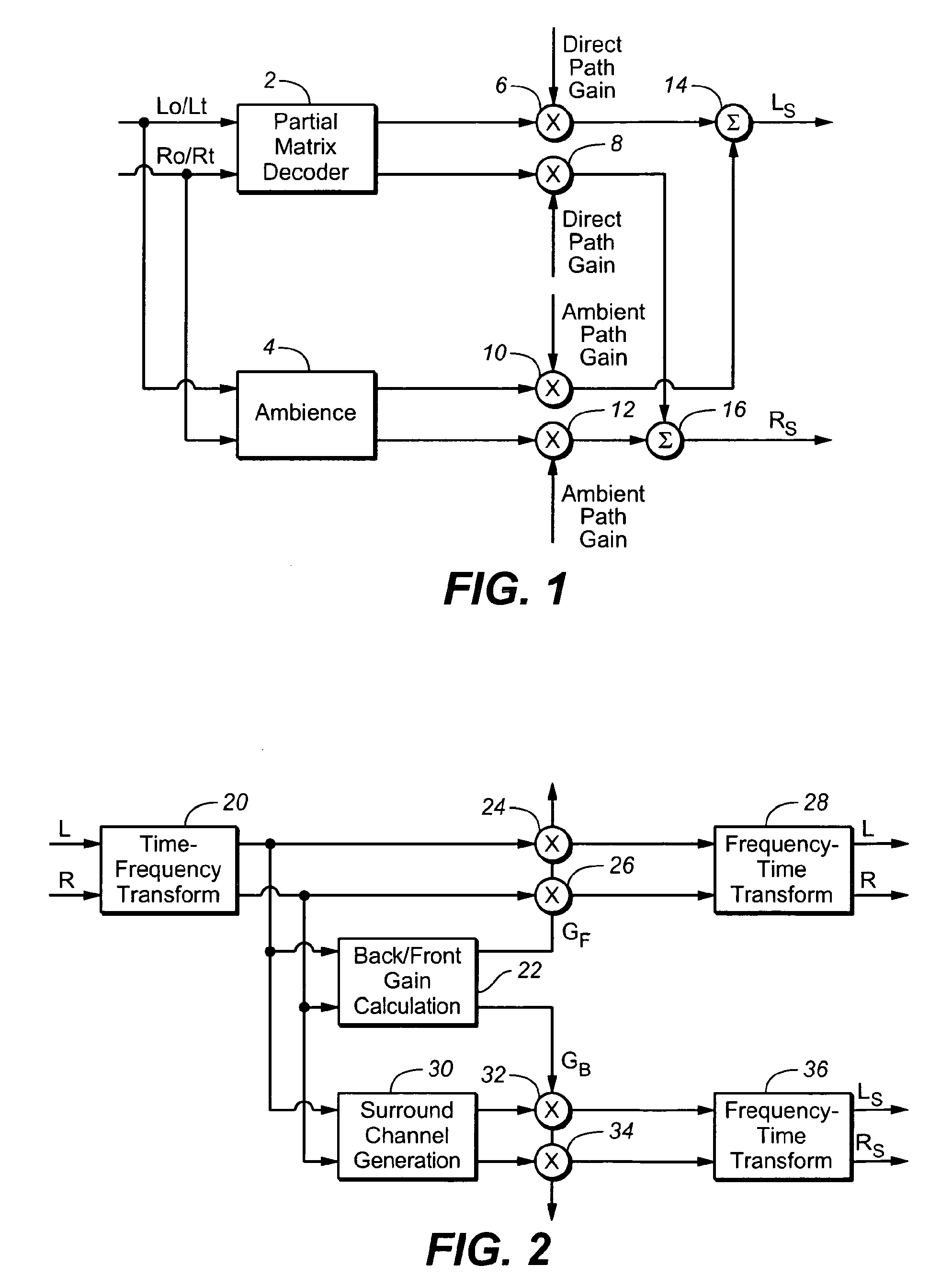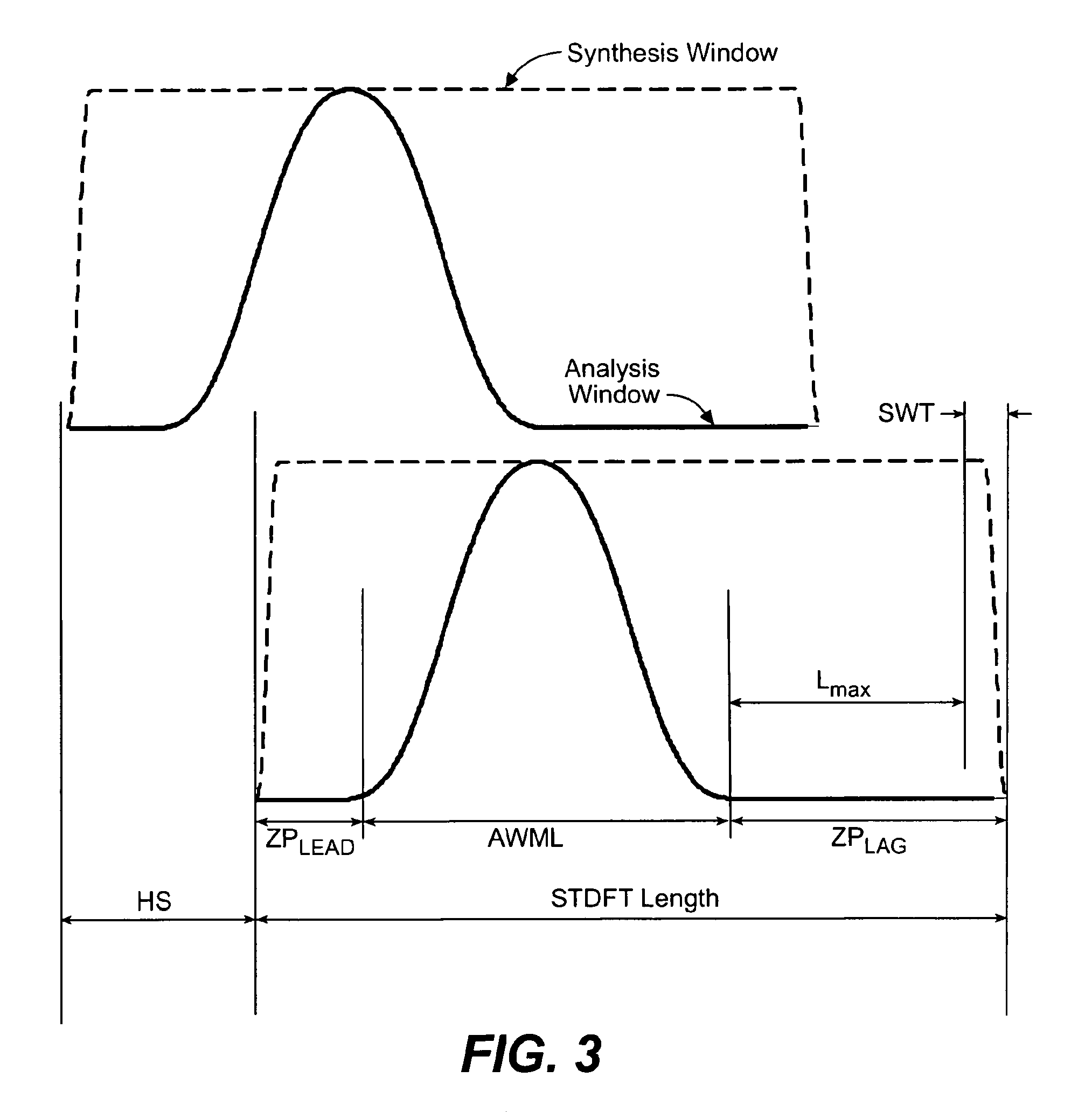Hybrid Derivation of Surround Sound Audio Channels By Controllably Combining Ambience and Matrix-Decoded Signal Components
a matrix-encoded and ambience-based technology, applied in the field of audio signal processing, can solve the problem that the technique does not re-render surround channel images from matrix-encoded (ltrt) material, and achieve the effect of re-reconstruction of matrix-encoded material more faithfully, improving the sense of envelopment, and strengthening the width of front channels
- Summary
- Abstract
- Description
- Claims
- Application Information
AI Technical Summary
Benefits of technology
Problems solved by technology
Method used
Image
Examples
Embodiment Construction
[0037]FIG. 1 shows a schematic functional block diagram of a device or process for deriving two surround sound audio channels from two input audio signals in accordance with aspects of the present invention. The input audio signals may include components generated by matrix encoding. The input audio signals may be two stereophonic audio channels, generally representing left and right sound directions. As mentioned above, for standard matrix-encoded two-channel stereophonic material the channels are often designated “Lt” and “Rt,” and for non-matrix encoded two-channel stereophonic material, the channels are often designated “Lo” and “Ro.” Thus, to indicate that the input audio signals may be matrix-encoded at some times and not matrix-encoded at other times, the inputs are labeled “Lo / Lt” and “Ro / Rt” in FIG. 1.
[0038]Both input audio signals in the FIG. 1 example are applied to a partial matrix decoder or decoding function (“Partial Matrix Decoder”) 2 that generates matrix-decoded si...
PUM
 Login to View More
Login to View More Abstract
Description
Claims
Application Information
 Login to View More
Login to View More - R&D
- Intellectual Property
- Life Sciences
- Materials
- Tech Scout
- Unparalleled Data Quality
- Higher Quality Content
- 60% Fewer Hallucinations
Browse by: Latest US Patents, China's latest patents, Technical Efficacy Thesaurus, Application Domain, Technology Topic, Popular Technical Reports.
© 2025 PatSnap. All rights reserved.Legal|Privacy policy|Modern Slavery Act Transparency Statement|Sitemap|About US| Contact US: help@patsnap.com



